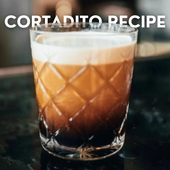
The Ultimate Guide to Moka Pot Brewing: Mastering Grind Size, Roast Levels, and Brewing Steps
Share
- Introduction
- Section 1: Unveiling the Moka Pot Magic
- 1.1 The Heart of the Moka Pot
- 1.2 The Bottom Reservoir
- 1.3 The Middle Coffee Chamber
- 1.4 The Top Collector
- Section 2: Mastering Grind Size
- 2.1 The Role of Grind Size
- 2.2 Optimal Grind Size for Moka Pot
- 2.3 Tailoring Grind Size to Your Taste
- Section 3: Deciphering Roast Levels
- 3.1 The Influence of Roast Levels
- 3.2 Medium Roast: The Sweet Spot
- 3.3 Roast Level Experimentation
- 3.4 Single Origin Elevation
- Section 4: Brewing Mastery - Step-by-Step Guide
Introduction:
Welcome to our Moka Pot brewing guide – your go-to resource for mastering the art of making delicious coffee. Whether you're a seasoned coffee connoisseur or just starting your brewing journey, this guide is designed to walk you through the process, step by step. We'll delve into key aspects like grind size, roast levels, and walk you through, ensuring a flavorful experience every time you use your Moka Pot.
Section 1: Unveiling the Moka Pot Magic
 Photo by Thomas Murphy
Photo by Thomas Murphy
1.1 The Heart of the Moka Pot
Understanding the Moka Pot's structure is the first step to unlocking its potential. Comprising of a bottom water reservoir, a middle coffee chamber, and a top collector, the Moka Pot embodies a dance between water and coffee grounds to create a flavorful brew. Each chamber plays an important role in the function of Moka Pot brewing.
1.2 The Bottom Reservoir
The Moka Pot's brewing process starts in the bottom reservoir, where cold water plays a crucial role. This initial stage is significant because it involves the extraction of soluble compounds from the coffee grounds. As cold water interacts with the grounds, it begins dissolving and extracting flavorful components, starting the creation of the coffee concentrate. This transformative process is essential for achieving the rich and aromatic brew that Moka Pot enthusiasts appreciate.
1.3 The Middle Coffee Chamber
In the middle chamber, also known as the coffee chamber, water and finely ground coffee come together. The process continues as pressure builds, facilitating the extraction of aromatic compounds, oils, and flavors from the coffee grounds. This process, often referred to as percolation, is fundamental in creating a well-balanced and flavorful coffee concentrate. Mastery of this step ensures that the essential elements in coffee are effectively extracted, contributing to the overall quality of the Moka Pot brew.
1.4 The Top Collector
The top collector serves as the endpoint where the concentrated coffee, produced through the brewing steps, is collected. This chamber helps ensure that the brewed coffee maintains its optimal temperature and prevents further extraction, preserving the desired flavors and aromas. It acts as the gateway for the coffee to be poured into your cup, providing a satisfying and flavorful culmination to the Moka Pot brewing experience.
Section 2: Mastering Grind Size
 Photo by Ashkan Forouzani
Photo by Ashkan Forouzani
2.1 The Role of Grind Size
Grind size is the silent hero of Moka Pot brewing, influencing the taste and strength of your coffee. Achieving the right grind size is pivotal for a balanced and rich cup.
2.2 Optimal Grind Size for Moka Pot
Strive for a medium grind – resembling table salt – to strike the perfect balance between extraction and avoiding filter clogs. This ensures that water and coffee grounds harmonize, resulting in a full-bodied brew.
2.3 Tailoring Grind Size to Your Taste
The beauty of Moka Pot brewing lies in its customization to suit your taste buds. Experiment with finer grinds for a bolder flavor or coarser grinds for a milder experience. The key is finding the grind size that resonates with your preferences.
Section 3: Deciphering Roast Levels
 Photo by nousnou iwasaki
Photo by nousnou iwasaki
3.1 The Influence of Roast Levels
Roast levels wield considerable influence over your coffee's flavor profile. From light to dark, each level contributes distinct notes to the brewing symphony.
3.2 Medium Roast: The Sweet Spot
Enter the medium roast – the ideal companion for Moka Pot brewing. Preserving the beans' nuanced flavors while adding depth, medium roasts create a well-balanced cup that harmonizes perfectly with the Moka Pot's percolation extraction method.
3.3 Roast Level Experimentation
Experiment by testing different roast levels. Lighter roasts accentuate brightness, while darker roasts intensify richness. However, the medium roast often stands out as the preferred choice for Moka Pot aficionados. Ultimately it's about your taste preference!
3.4 Single Origin Elevation
Broaden your Moka Pot experiences by sampling single origin coffees. Sourced from specific regions, these beans offer unique flavor profiles. Whether it's the fruity notes of Ethiopian Yirgacheffe or the chocolatey richness of Colombian coffee, single origin beans add depth to your Moka Pot repertoire.
Section 4: Brewing Mastery - Step-by-Step Guide
 Photo by Thanos Amoutzias
Photo by Thanos Amoutzias
Brewing Workflow
4.1 Gather Your Tools
Collect your Moka Pot, freshly ground coffee (medium grind), and cold water.
4.2 Fill the Reservoir
Fill it with cold water, ensuring it stays below the safety valve. The quantity of water will depend on the size of your Moka Pot and the desired strength of your brew.
4.3 Add Coffee Grounds
With water in place, move on to the middle chamber – the coffee chamber. Add the coffee grounds to the filter basket, ensuring an even distribution without compacting them. Level the grounds gently with your finger or a flat tool, allowing for uniform extraction.
4.4 Assemble and Heat
Securely assemble the Moka Pot, ensuring a tight fit between the bottom and top chambers. Place the assembled pot on a medium heat source, either a stovetop or an electric burner.
4.5 Brew and Listen
As the water heats, the percolation begins. Pressure builds, forcing the water through the coffee grounds, and the transformation from water to coffee begins. Listen for the hissing sound – an audible cue that signals the completion of the brewing process.
4.6 Pour and Savor
The best part involves pouring the brewed coffee into your favorite mug. Enjoy the work you put into the extraction, and customize your cup with milk, sugar, or any preferred additions.
4.7 Perfecting Your Pour
The way you pour your Moka Pot coffee can actually impact its flavor. Experiment with different pouring techniques – a slow and steady pour may result in a smoother cup, while a quick pour might intensify the richness. The angle at which you pour can also affect the crema, the golden layer that lays on top of your coffee.
4.8 Cleaning and Maintenance
To ensure consistency of flavor, proper cleaning and maintenance of your Moka Pot are crucial. Disassemble the pot after each use, clean the components thoroughly, and air-dry them. Avoid using soap, as it may leave a residue that affects the taste of your coffee.
Related Posts
-

Shake It Up: Octave Coffee's Shaken Espresso Recipe
Hey coffee folks—want to mix things up a bit? Check out our Octave Shaken Espresso Recipe. It’s got all the bold fl...
-

Embrace Italian Indulgence: A Guide to Perfect Affogato Shots
Index: Introduction Ingredients Instructions Brew Espresso the Italian Way Prepare Gelato with Italian Flair Cr...
-

Octave Coffee's Cinnamon Mocha Recipe: An Effortless Harmony of Flavors
As the Christmas season unfolds, treat yourself to the warmth of Octave Coffee with a simple yet delicious Cinnamon ...
-

Cortadito Recipe: A Brief History and Simple Guide
Originating in Cuban coffee culture, "cortadito" is a Spanish term that translates to "cut" in English. In the co...
-

Recipe Series: "Poor Man's Cortadito"
A Masterclass in No-Nonsense Coffee from Your Own Filter Basket So, you fancy yourself a coffee connoisseur but can't...
-

Recipe Series: Cozy Autumn Bliss - Homemade Pumpkin Spice Latte
Here in the American northeast, as the leaves start to change and the air turns crisp, there's no better way to embra...
-

How to Make Coffee Without a Coffee Maker: Simple Solutions from a Coffee Roaster
Table of Contents The Classic: Boiling Water & Coffee Grounds The Cowboy Method: Coffee Over an Open Fire Im...
-

V60 Pour-Over Coffee: A Simple, But Complete Guide
The V60 pour-over method is distinctive because it not only brings out nuanced flavors in coffee roasts, but also off...
-

How to Make Strong Coffee: A Guide By Octave Coffee
Brewing a cup of resilience becomes an art form with Octave Coffee's comprehensive guide on how to make strong coffe...
-

The Art of Vietnamese Coffee: Brewing with a Phin
I was just talking to a friend of mine from church this week and he was introducing me to the idea of Vietnamese Milk...












